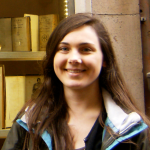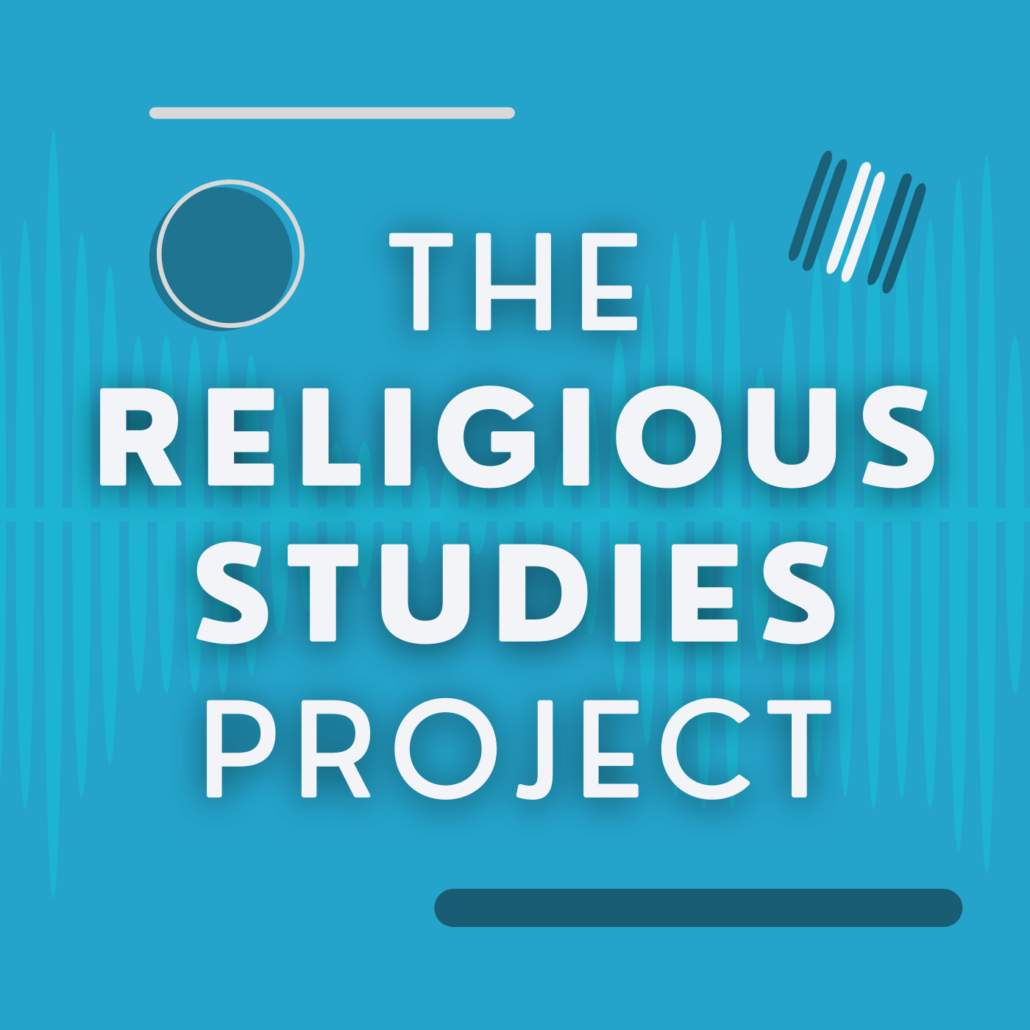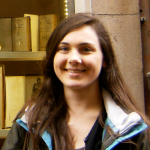 The Faith-Spangled Banner: Changes in American attitudes and belief in all directions
The Faith-Spangled Banner: Changes in American attitudes and belief in all directions
By Lindsey Arielle Askin, Durham University
Published by the Religious Studies Project on 13 June 2012 in response to the Religious Studies Project Interview with Ariela Keysar on “What does ‘belief’ mean to Americans?” (11 June 2012).
In contemplating a response to Prof Ariela Keysar’s interview with the Religious Studies Project over her work as Associate Director of ISSSC and its most famous endeavour, ARIS, I was struck by the dilemma faced when introducing myself to people here in the UK and telling them where I am from. The replies range from everywhere and between, ‘Connecticut, that’s near Minnesota,’ to the occasional, ‘I know exactly where that is! I’ve driven through your state! It’s very pretty in autumn.’ UK knowledge of the United States is a tricky one to evaluate, as it varies widely from an extensive familiarity since childhood of everything American, especially television and films, to nearly nothing at all with the basic ability to place New York City on a map and knowledge of the Simpsons and Glee.
Therefore I will try to carefully tread both lakes of knowledge (or ponds, respectively), and I sincerely hope that I can be informative and insightful for those in the latter group, without condescending to those who are frequently much more informed about what’s going on in America than many Americans themselves. Some of the data found by ARIS might be news to many, and yet other more subtle trends seem to defy all prediction.
At the end of the interview, Keysar promoted the ARIS 2008 Summary Report, available for free on the ARIS website. The report summarizes trends and findings since 1990 (NRSI) and 2001, the two previous years when ARIS was conducted. It contains many informative tables, and is divided into three parts: (1) national statistics on belief according to the questions posed by the survey, and how these responses were grouped together as quantitative data; (2) the data according to age, gender and marital status; and finally, (3) the data according to race, educational level, and geography—the last of which gives the term ‘Bible Belt’ a run for its money.
The first question to ask about quantitative demographic data that is arranged into percentages (e.g. 75% of Americans today are …), is how population and immigration affects our understanding of the numbers. ARIS shows us most of all, then, the changing composition of American society, not just the changing religious membership rates, since the population of the US increased by 30% from 175,440,000 in 1990 to 228,182,000 in 2008 (all numbers are drawn from Barry A. Kosmin and Ariela Keysar’s ARIS 2008 Summary Report).
So, delving more deeply into the data, ARIS discovered that the reason Islam in the US is slightly more male than female, and slightly younger than other faiths, is because of immigration. For another example, despite national losses in Catholicism, Texas and Californa’s Catholic composition increased due to America’s largest minority, Hispanic or Latino, who have immigrated to these states.
Other trends mark shifts in between movements in Christianity; the main trend is from mainline Churches to more Evangelical or non-denominational Churches. And while the number of Christians in America has risen, paradoxically America is now less Christian, because there are simply more non-Christian American citizens in 2008 than were in 1990 or even 2001. Yet one section persistently seemed to defy movement, immigration and other trends of changing social composition in America: the Nones.
The Nones are an interesting category. Despite age, education level, and geography especially (that is, even in the South), the Nones managed to rise in all demographic categories, from 8% in 2001 to 15% in 2008. While such a large percentage now professes non-belief, this is a group distinct from those who would self-identify as atheists, who stand at 0.7% of the American public (agnostics at 0.9%). The disparity between the Nones/No Religion and the Atheist and Agnostic categories is stark. Keysar muses that while many Americans today may feel a lack of belief, there is still very much a taboo surrounding explicit self-identification as an atheist or agnostic (see Edgell et al. 2006). Finally, while there is a remarkable variation of over 100 unique responses to the question, ‘What is your religion, if any?’ – the reply of ‘None’ was the most common of all answers. Yet still, the number of Americans today who identify as Atheist or Agnostic has still risen. Slowly but surely, the taboo is becoming less strong.
Other interesting facts from ARIS 2008 include the responses to questions about God and belief. The gaps between belief and religious category offer proof today that in America, association with religion no longer automatically equates to belief in God—or, just as much, that non-association with any religion equates to a lack of belief. Listening to Keysar’s podcast creates a sudden dawning realization that many religious people in America often have less belief than people who profess to be non-religious. It seems, in fact, that religious association often has little to do with what one believes (or how one votes). It is a shame that ARIS cannot ask about political leanings, but I think the results would challenge more than confirm many European (and North-East American) stereotypes about the religious composition of Republican and Democrat party voters.
Yet despite this trend – most confusing of all, when asked about human evolution, only 33% of Nones actually ‘professed belief’ in the concept. However, positive belief in evolution was not the only committal answer, as those who outright rejected evolution was then 36% of the whole survey, and only 17% of Nones – leaving the largest chunk of Americans with no professed religion or faith mostly unsure of how they felt about evolution.
Keysar labels evolution, as much as religious identification, still a ‘cultural wedge’ in society, in her words. And yet, paradoxically, very few of the Nones, 17% to be exact, believed that there was anything to horoscopes. Nones are now very sceptical of New Age practice, but also, strangely, of human evolution. This makes up a very interesting profile for many Nones: no organised religion, no New Age, perhaps God, perhaps not, or perhaps God acting in the world and in one’s personal life, but no evolution. The ghost of the Scopes trial still haunts American society.
Finally, the Summary Report notes religious belief according to gender and religion. In America, there are 49 males for every 52 females (ARIS Summary Report, p.11). All Christian groups matched this national average, whereas in non-Christian religions where there were a higher percentage of immigrants, there were more males. Yet the Nones numbered 60% male, matching the suspected theory that women remain more religious than men. As far as marriage goes, rates are high regardless of religion or lack thereof. Catholics and Nones match at 11%, while, shockingly, Pentecostals have a rate of 16% divorced.
The final table of the Summary Report tells us much more about the composition of American states and regions today than is widely assumed. Familiarizing yourself with this type of information proves particularly interesting in an election year. New England is becoming less Catholic, Nones have increased everywhere but especially in New England more than anywhere else (more ways in which New England is like the Old England – in addition to being green and pleasant), and the South is becoming more Catholic in many states, less Protestant almost everywhere, and non-Christian religions are on the rise!
I have attempted to include some of the most interesting trends that were not all found in the podcast. The most important thing I have learned from this podcast and the work of ARIS is that religion no longer automatically means belief in God or providence, and that the non-religious in America are often just as religious as those professing faith. Most surprisingly, the former category is also simultaneously suspicious of both New Age trends and science. Anyone who has switched on a TV in both the USA and the UK will notice that American channels tend be more receptive to showing things about aliens, conspiracies, ghosts, and alternative medicine. Which makes me think, would the disbelieving response of the Nones have been different if the question had been about ghosts or aliens, instead of star signs?
The trends which have occurred over the seven year period between 2001, the year everything changed, and 2008, have all been surprising. We have certainly grown in many ways since 2001, but our self-perception as a ‘Christian nation’ may need to shift. The most delightful changes are the ones that show a shifting composition in regions typically viewed by others and ourselves to be traditionally one way or another, such as the Bible Belt – because for today and in future years, those stereotypes might need to radically shift to reflect reality.
The two things which my friends in Britain seem to pay more attention to in America than anything else are politics and religion, which our media likewise seems to use as a lens for making sense of the world. So, it is truly fascinating to discover that all is not as it seems. One thing I have noticed personally from trips back home is, as ARIS has found, that more Americans want to reject self-identification with any ‘organized religion’ at all. Could this be partly due to the polarity of our media, about which Americans constantly speak and attribute so much in our society? Are we becoming switched off by the lambasting, while others still seem inspired by it?
Could it be we are becoming more sceptical? I have always understood that we Americans have a strange relationship with scepticism; we both love it and hate it, don’t allow our politicians to have it, and mistrust it in our enemies. And yet, we seem to be slowly becoming more sceptical as a nation, albeit sometimes in strange ways. But what an unexpected change, and who knows where it will lead in the next ARIS years? Keysar’s project has, at least, made me increasingly sceptical of my own traditional understanding of this increasingly complex and colourful nation.
This material is disseminated under a Creative Commons Attribution-NonCommercial-NoDerivs 3.0 Unported License. and can be distributed and utilised freely, provided full citation is given.
About the Author:
 Lindsey Arielle Askin is currently a postgraduate taught MA student in Biblical Studies at Durham University, is taking lots of dead languages, and is writing a dissertation on Second Temple attitudes to Hebrew in the Book of Jubilees. She is a graduate of the University of Edinburgh, has done a PG Cert in education, and is from Connecticut, USA. Lindsey is involved in various reading groups, web committee, Café des Femmes reseach group, founded her own Apocrypha/Pseudepigrapha reading group, and runs its updates blog “Interesting Texts“. Her research interests are in dead languages, Second Temple Judaism, biblical criticism, Dead Sea Scrolls, scribal practices, and the Old Testament. She is also interested in computers, book-repair/binding, and TeX. She aims to commence her PhD studies in October 2012.
Lindsey Arielle Askin is currently a postgraduate taught MA student in Biblical Studies at Durham University, is taking lots of dead languages, and is writing a dissertation on Second Temple attitudes to Hebrew in the Book of Jubilees. She is a graduate of the University of Edinburgh, has done a PG Cert in education, and is from Connecticut, USA. Lindsey is involved in various reading groups, web committee, Café des Femmes reseach group, founded her own Apocrypha/Pseudepigrapha reading group, and runs its updates blog “Interesting Texts“. Her research interests are in dead languages, Second Temple Judaism, biblical criticism, Dead Sea Scrolls, scribal practices, and the Old Testament. She is also interested in computers, book-repair/binding, and TeX. She aims to commence her PhD studies in October 2012.
References:



